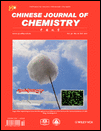Sugar-fiber Imprinting to Generate Microgrooves on Polymeric Film Surfaces for Contact Guidance of Cells
Zehua Qu
State Key Laboratory of Molecular Engineering of Polymers, Department of Macromolecular Science, Advanced Materials Laboratory, Fudan University, Shanghai 200433, China
Search for more papers by this authorCorresponding Author
Jiandong Ding
State Key Laboratory of Molecular Engineering of Polymers, Department of Macromolecular Science, Advanced Materials Laboratory, Fudan University, Shanghai 200433, China
State Key Laboratory of Molecular Engineering of Polymers, Department of Macromolecular Science, Advanced Materials Laboratory, Fudan University, Shanghai 200433, China, Tel.: 0086-21-65643506; Fax: 0086-21-65640293Search for more papers by this authorZehua Qu
State Key Laboratory of Molecular Engineering of Polymers, Department of Macromolecular Science, Advanced Materials Laboratory, Fudan University, Shanghai 200433, China
Search for more papers by this authorCorresponding Author
Jiandong Ding
State Key Laboratory of Molecular Engineering of Polymers, Department of Macromolecular Science, Advanced Materials Laboratory, Fudan University, Shanghai 200433, China
State Key Laboratory of Molecular Engineering of Polymers, Department of Macromolecular Science, Advanced Materials Laboratory, Fudan University, Shanghai 200433, China, Tel.: 0086-21-65643506; Fax: 0086-21-65640293Search for more papers by this authorAbstract
Anisotropic surface topography is known to induce the contact guidance of cells, and facile and biocompatible approaches of the physical modification of the pertinent matrix surfaces are thus meaningful for biomaterials. Herein, we put forward a sugar-fiber imprinting technique to generate microgrooves on hydrophobic polymers demonstrated by the poly(lactic-co-glycolic acid) (PLGA) films. Microgrooves were conveniently generated after removing sugar fibers simply by water. The resulting locally anisotropic microgrooves were confirmed to elongate the cells cultured on the surface.
REFERENCES
- 1 Chen, C. S.; Mrksich, M.; Huang, S.; Whitesides, G. M.; Ingber, D. E.. Biotechnol. Progr., 1998, 14, 356.
- 2 Huang, J. H.; Grater, S. V.; Corbellinl, F.; Rinck, S.; Bock, E.; Kemkemer, R.; Kessler, H.; Ding, J. D.; Spatz, J. P.. Nano Lett., 2009, 9, 1111.
- 3 Marklein, R. A.; Burdick, J. A.. Adv. Mater., 2010, 22, 175.
- 4 Meng, Q. H.; Cheng, S.; Lan, M. B.; Wei, G.. Chin. J. Chem., 2012, 30, 249.
- 5 Peng, R.; Yao, X.; Cao, B.; Tang, J.; Ding, J. D.. Biomaterials, 2012, 33, 6008.
- 6 Weiss, P.. J. Exp. Zool., 1945, 100, 353.
- 7 Ito, Y.. Biomaterials, 1999, 20, 2333.
- 8 Matsuzaka, K.; Walboomers, X. F.; de Ruijter, J. E.; Jansen, J. A.. Biomaterials, 1999, 20, 1293.
- 9 Andersson, A. S.; Olsson, P.; Lidberg, U.; Sutherland, D.. Exp. Cell Res., 2003, 288, 177.
- 10 Teixeira, A. I.; Abrams, G. A.; Bertics, P. J.; Murphy, C. J.; Nealey, P. F.. J. Cell Sci., 2003, 116, 1881.
- 11 Biggs, M. J. P.; Richards, R. G.; McFarlane, S.; Wilkinson, C. D. W.; Oreffo, R. O. C.; Dalby, M. J.. J. Royal Soc. Interface, 2008, 5, 1231.
- 12 Kim, D. H.; Seo, C. H.; Han, K.; Kwon, K. W.; Levchenko, A.; Suh, K. Y.. Adv. Funct. Mater., 2009, 19, 1579.
- 13 Yao, L.; Wang, S. G.; Cui, W. J.; Sherlock, R.; O'Connell, C.; Damodaran, G.; Gorman, A.; Windebank, A.; Pandit, A.. Acta Biomaterialia, 2009, 5, 580.
- 14 Sun, J. G.; Tang, J.; Ding, J. D.. Chin. Sci. Bull., 2009, 54, 3154.
- 15 Guillemette, M. D.; Park, H.; Hsiao, J. C.; Jain, S. R.; Larson, B. L.; Langer, R.; Freed, L. E.. Macromol. Biosci., 2010, 10, 1330.
- 16 Kenar, H.; Kose, G. T.; Toner, M.; Kaplan, D. L.; Hasirci, V.. Biomaterials, 2011, 32, 5320.
- 17 Charest, J. L.; Garcia, A. J.; King, W. P.. Biomaterials, 2007, 28, 2202.
- 18 Kirmizidis, G.; Birch, M. A.. Tissue Eng. Part A, 2009, 15, 1427.
- 19 Kapoor, A.; Caporali, E. H. G.; Kenis, P. J. A.; Stewart, M. C.. Acta Biomaterialia, 2010, 6, 2580.
- 20 Aizawa, Y.; Wylie, R.; Shoichet, M.. Adv. Mater., 2010, 22, 4831.
- 21 Peng, R.; Yao, X.; Ding, J. D.. Biomaterials, 2011, 32, 8048.
- 22 Jiang, Y. Z.; Lu, S. L.; Zeng, Y. J.. J. Tissue Eng. Regen. Med., 2011, 5, 402.
- 23 Yan, C.; Sun, J.; Ding, J.. Biomaterials, 2011, 32, 3931.
- 24 Pan, Z.; Yan, C.; Peng, R.; Zhao, Y.; He, Y.; Ding, J.. Biomaterials, 2012, 33, 1730.
- 25 Jeon, H.; Hidai, H.; Hwang, D. J.; Healy, K. E.; Grigoropoulos, C. P.. Biomaterials, 2010, 31, 4286.
- 26 Tang, J.; Peng, R.; Ding, J. D.. Biomaterials, 2010, 31, 2470.
- 27 Jiang, Y. Z.; Ding, G. F.; Lu, S. L.. Mol. Biol. Rep., 2011, 38, 387.
- 28 Zhao, Y. C.; Wu, J.; Huang, W. D.; Ding, J. D.. Chin. J. Chem., 2012, 30, 491.
- 29 Wu, L. B.; Ding, J. D.. Biomaterials, 2004, 25, 5821.
- 30 Pan, Z.; Ding, J. D.. Interface Focus, 2012, 2, 366.
- 31 Miller, J. S.; Stevens, K. R.; Yang, M. T.; Baker, B. M.; Nguyen, D.-H. T.; Cohen, D. M.; Toro, E.; Chen, A. A.; Galie, P. A.; Yu, X.; Chaturvedi, R.; Bhatia, S. N.; Chen, C. S.. Nat. Mater., 2012, 11, 768.




